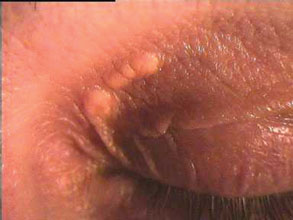
Patients exhibiting xanthelas-mata have an increased risk of heart disease while those with arcus of the cornea do not, according to a study by a team based at Copenhagen University Hospital (published in this week's BMJ online).
More than 12,500 healthy individuals aged between 20 and 93 years were monitored over a 30-year period to see if those with xanthelasmata or arcus or both had increased risk of developing ischaemic heart disease. Xanthelasmata are flat yellow plaques commonly found around the eyelids and both they and arcus of the cornea are commonly referred by optometrists as evidence of a need for a blood lipid test. The patients with xanthelasma were more likely to have a heart attack (hazard/odds ratio 1.48), ischaemic heart disease (0.94), stroke (0.94) and death (1.14). The corresponding hazard/odds ratios for arcus were not significant.
Register now to continue reading
Thank you for visiting Optician Online. Register now to access up to 10 news and opinion articles a month.
Register
Already have an account? Sign in here

